














| Heliophanus tribulosus (Simon, 1868) |















|
|
Scientific name: Heliophanus tribulosus (Simon, 1868) Common name: French name: Order: Araneae Family: Salticidae Size: 3 to 4 mm for males, 4 to 5.5 mm for females. Biotope: Low growing vegetation, sunny meadows, woodland edges, sunny rocks, walls. Web: No web. Spiders of the silicide family chase by looking at preys with their big size eyes. They move by jumping. Observation period: Spring and summer. Geographic area: Europe, east to Kazakhstan. |
Heliophanus tribulosus is a very small jumping spider showing typical reddish brown hairless patches on the lateral sides of the cephalothorax. Males and females are very different. The female, which is a greenish brown colour, shows uniformly yellow coloured legs and pale green palps becoming darker at the tip. The upper side of the cephalothorax is rather dark. There is a white stripe between the posterior lateral eyes. The abdomen is circled with a white stripe. The black spinnerets, at the back, are also circled by a small whitish curved stripe. This last stripe is sometimes reduced to only two white spots. The centre of the abdomen shows another white mark which is like an upside down V-shape. Males are similar to females till the last moult. The legs become black with white marks except tarsi and metatarsi which remain brown. The cephalothorax becomes hairless and the pilosity on the abdomen becomes very short so that you can see reddish of greenish metallic sheens. Two white spots remain at the back of the abdomen and two other ones remain at the back of the posterior lateral eyes. There is also a white stripe around the abdomen. There is a possible confusion with male Heliophanus kochii which shows 4 white dots on the abdomen (this is sometimes the case for Heliophanus tribulosus) but no reddish cheek (not very easy to see). |
| [To know more about the Heliophanus tribulosus] [Next picture] [Top] |
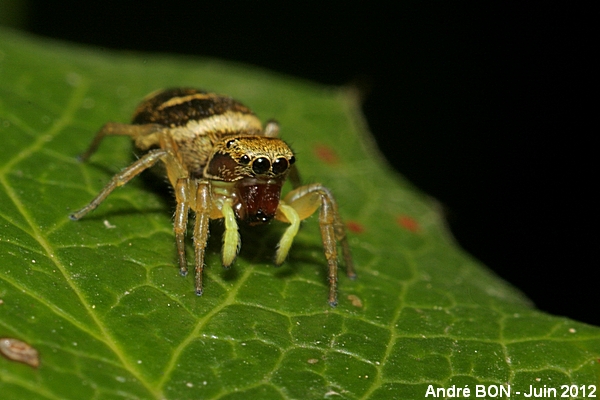
|
As with all jumping spiders I try to shoot a front view picture. I need to make progress as this one is slightly blurred. This picture could not be displayed with a larger side and I have pushed the sharpening cursor on the post processing software. |
| [To know more about the Heliophanus tribulosus] [Next picture] [Previous picture] [Top] |
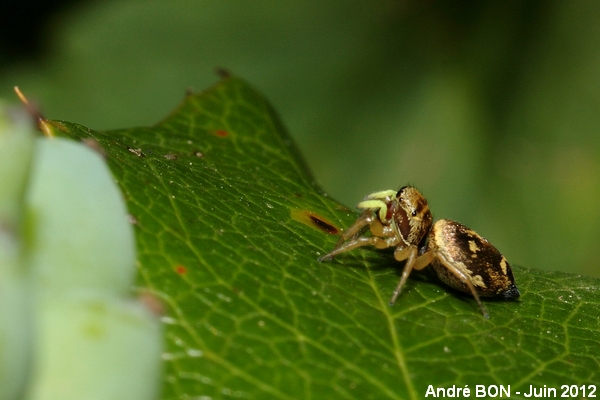
|
The reddish patch on the lateral side of the cephalothorax makes me confident about the species identification. |
| [To know more about the Heliophanus tribulosus] [Next picture] [Previous picture] [Top] |
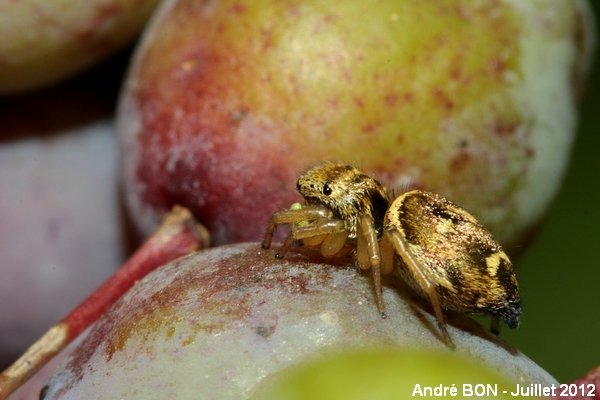
|
I have only observed females. |
| [To know more about the Heliophanus tribulosus] [Next picture] [Previous picture] [Top] |
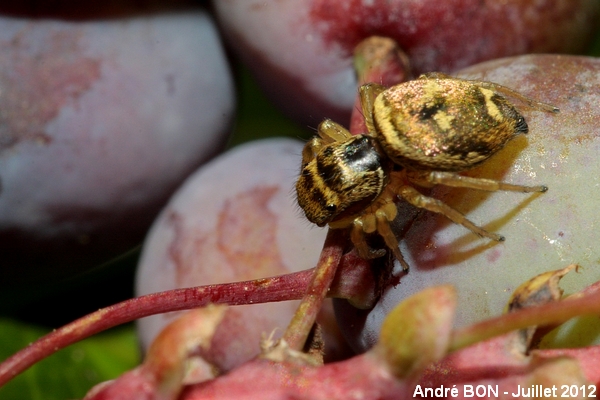
|
Here is a good view of the markings on the upper side of the cephalothorax. |
| [To know more about the Heliophanus tribulosus] [Next picture] [Previous picture] [Top] |
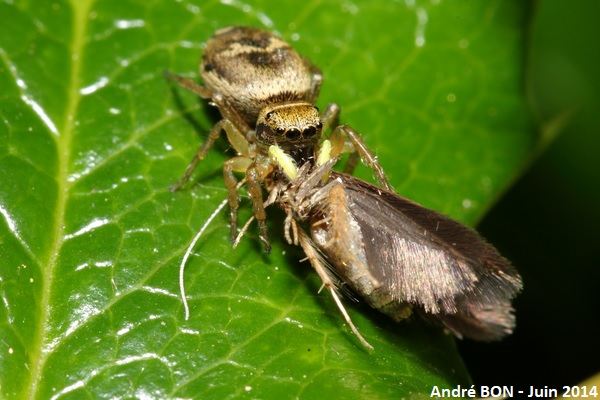
|
With a large prey. |
| [To know more about the Heliophanus tribulosus] [Next picture] [Previous picture] [Top] |
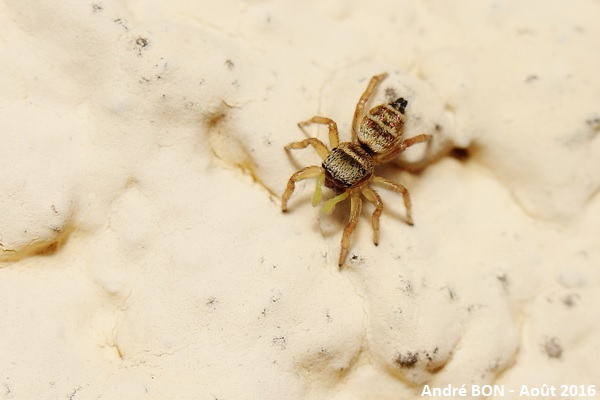
|
I have observed this jumping spider on a sunny wall. |
| [To know more about the Heliophanus tribulosus] [Next picture] [Previous picture] [Top] |
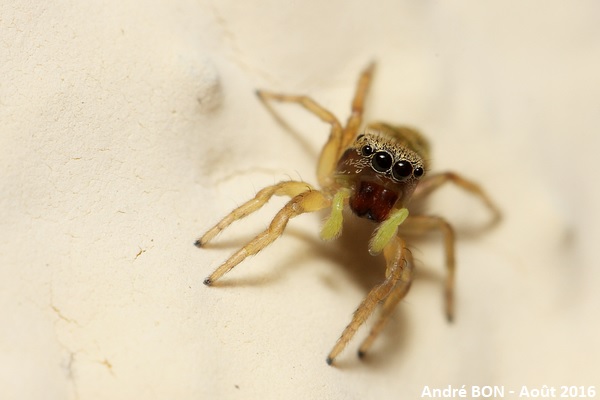
|
I'm making progress at shooting these small jumping spiders. I use extension tubes and a cobra flash with a homemade diffuser. Manual focus is set to the shortest distance. I approach slowly, taking support and shoot the picture as soon as the eyes appear sharp in the viewfinder. |
| [To know more about the Heliophanus tribulosus] [Next picture] [Previous picture] [Top] |
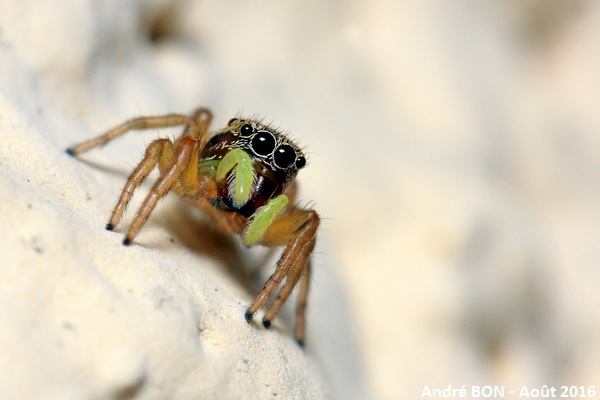
|
Another front view. |
| [To know more about the Heliophanus tribulosus] [Next picture] [Previous picture] [Top] |

|
It is not easy to get a view of jumping spiders' sternum (area between the base of the legs) "in natura". This Heliophanus tribulosus kindly took the position to show it to me. |
| [To know more about the Heliophanus tribulosus] [Next picture] [Previous picture] [Top] |
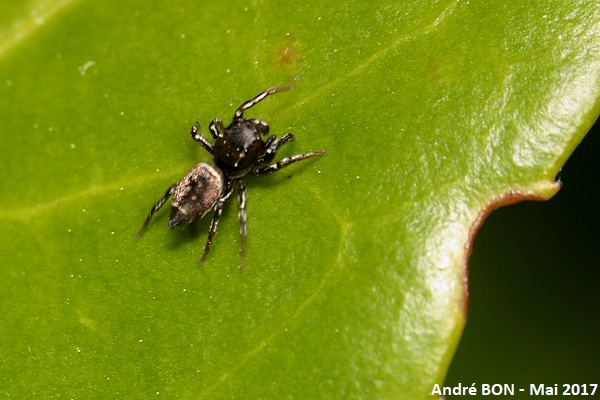
|
Here is a male with its white markings on the legs. |
| [To know more about the Heliophanus tribulosus] [Next picture] [Previous picture] [Top] |
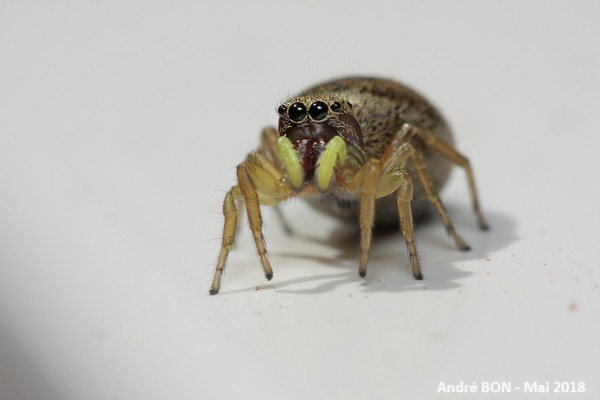
|
The rounded abdomen of this female indicates that spawning is imminent. |
| [To know more about the Heliophanus tribulosus] [Next picture] [Previous picture] [Top] |

|
Here is a male observed near the previous female. |
| [To know more about the Heliophanus tribulosus] [Next picture] [Previous picture] [Top] |
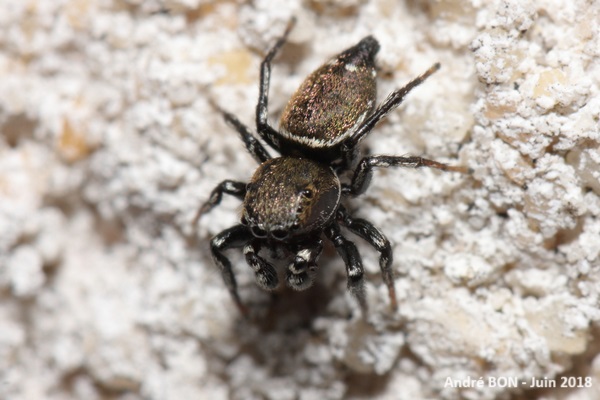
|
This view clearly shows the white markings on the male's abdomen. |
| [To know more about the Heliophanus tribulosus] [Next picture] [Previous picture] [Top] |
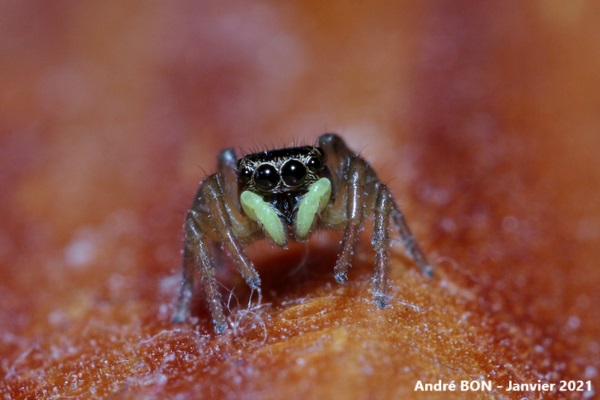
|
It's winter and you can also come across Heliophanus tribulosus at this time of year. I photographed this little jumping spider on the front door of the house, maybe it wanted to come in to find some warmth. |
| [To know more about the Heliophanus tribulosus] [Previous picture] [Top] |
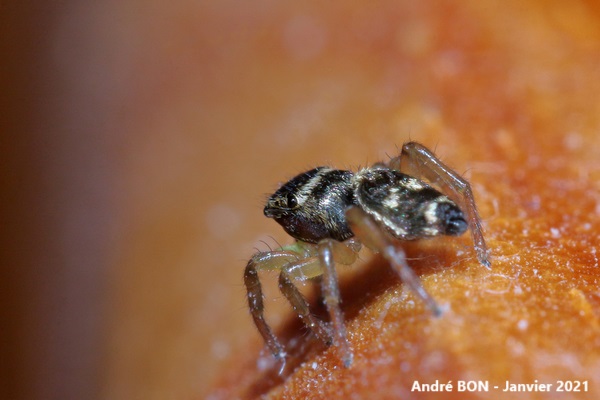
|
Wherever we stand, the Salticidae can always keep (at least) one eye on us. |